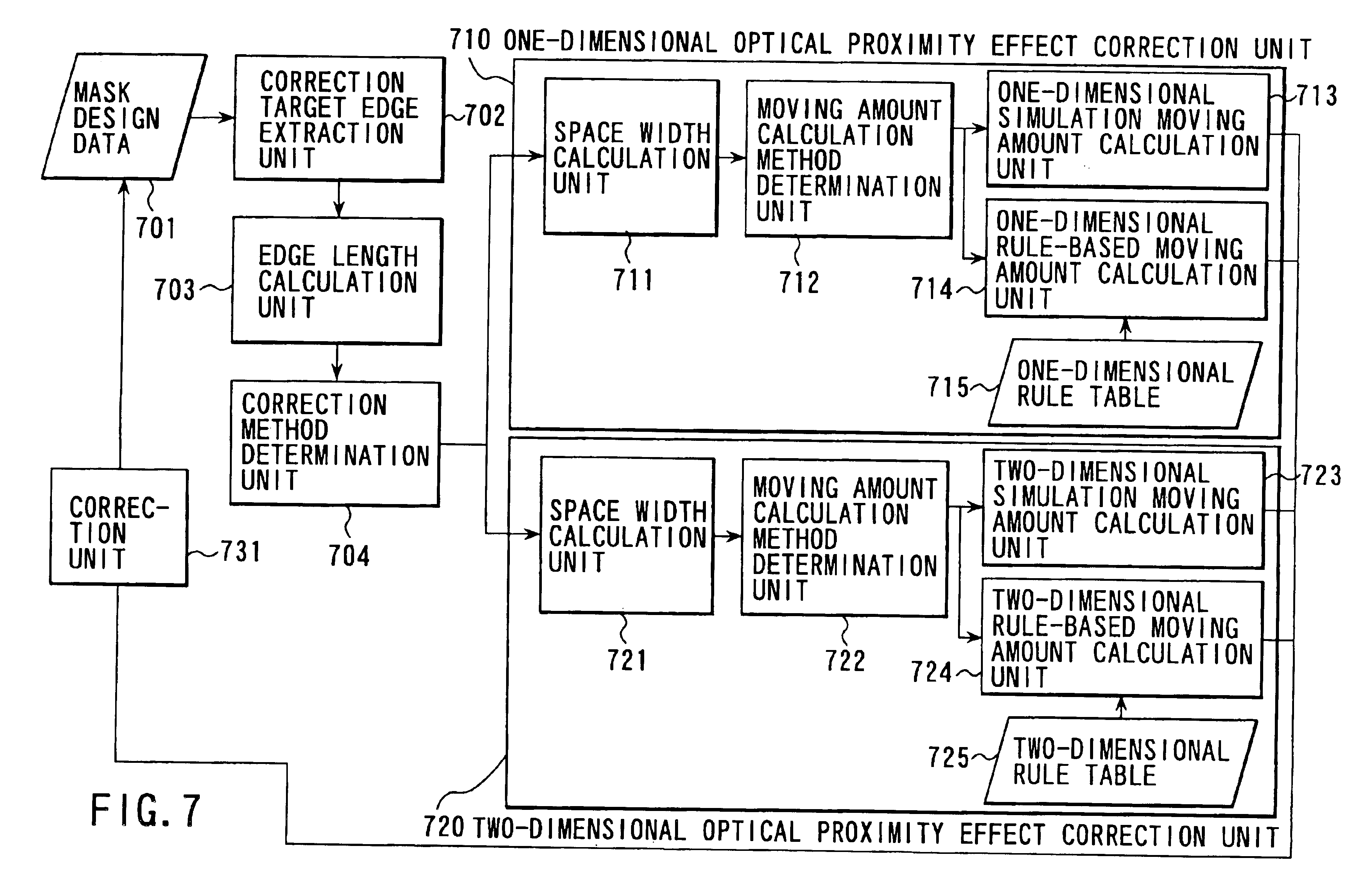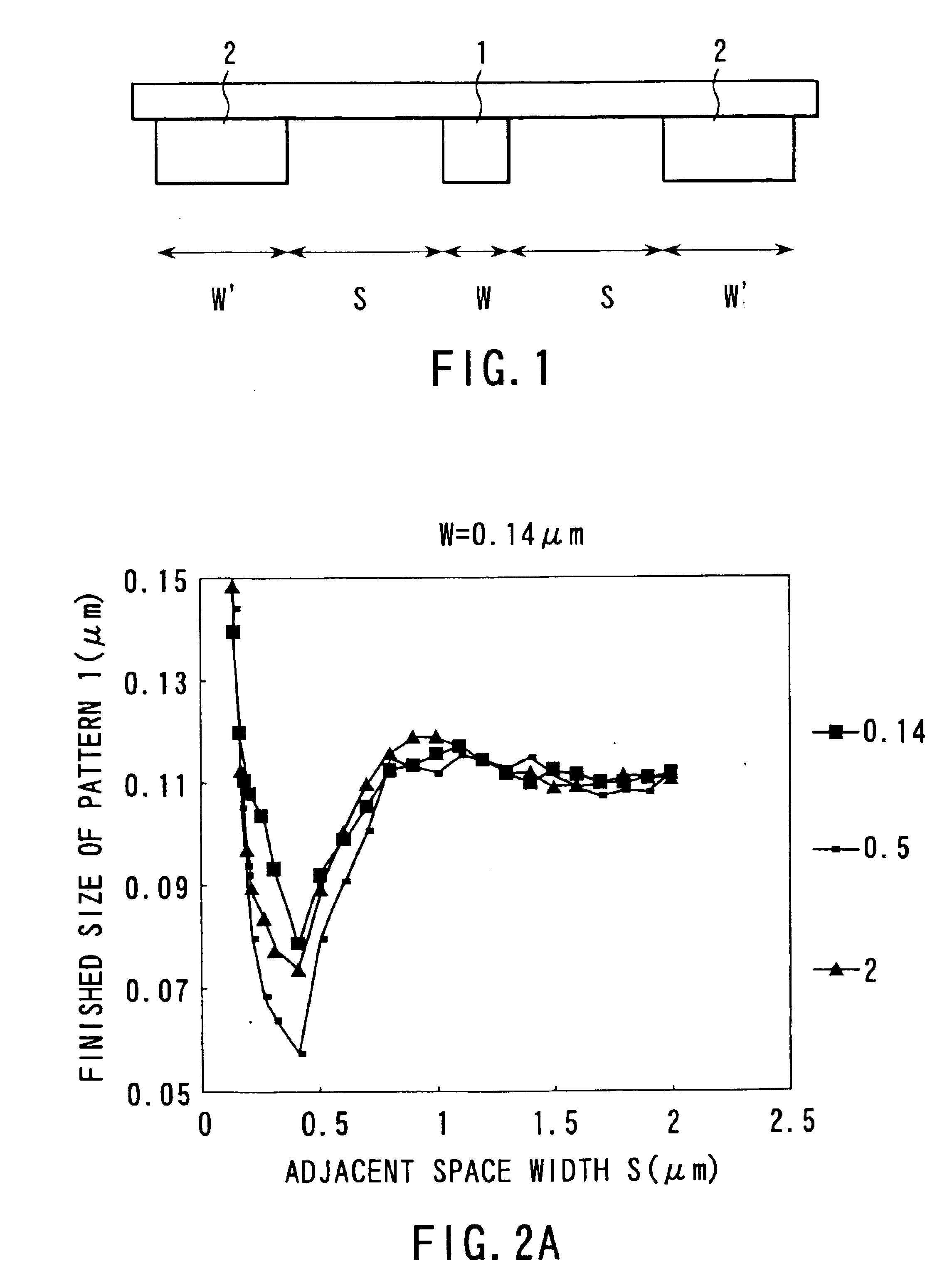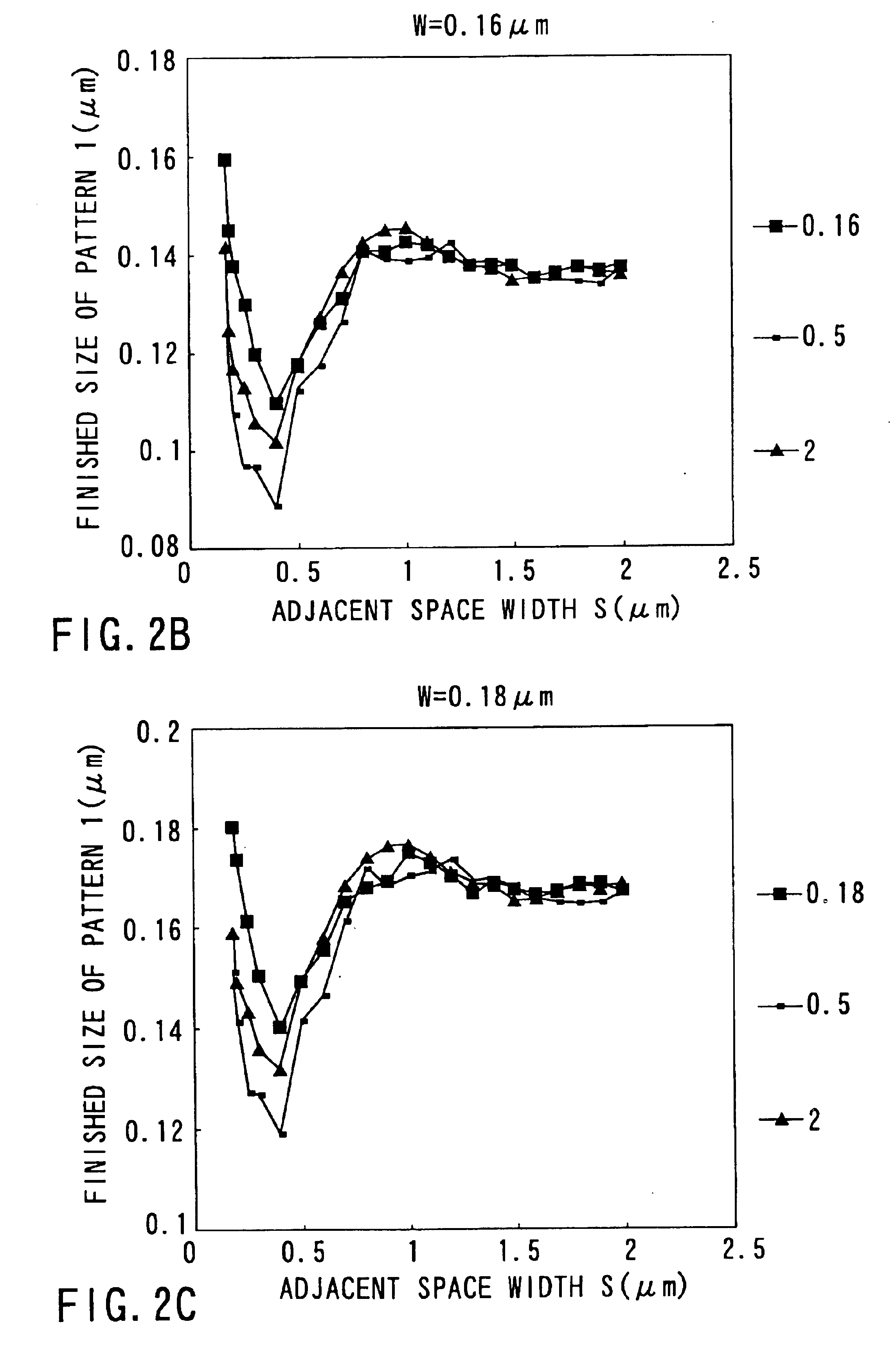Mask pattern correction method, mask pattern creation system using the correction method, and computer-readable recording medium
a mask pattern and correction method technology, applied in the field of mask pattern correction method, mask pattern creation system using the correction method, computer-readable recording medium, can solve the problems of difficult to obtain high correction precision and very long correction time, and achieve the effect of short correction time, long correction time and high correction precision
- Summary
- Abstract
- Description
- Claims
- Application Information
AI Technical Summary
Benefits of technology
Problems solved by technology
Method used
Image
Examples
first embodiment
[First Embodiment]
A one-dimensional pattern shown in FIG. 1 was used to calculate the finished size of a pattern when a line width W of a correction target pattern 1, a space width S to the edge of an adjacent pattern 2, and a line width W′ of the adjacent pattern, which are main factors influencing the finished size of the correction target pattern 1, were changed. Exposure conditions were λ=0.248 μm, NA=0.68, σ=0.75, ε=0.67, and a 6%-HT bright-field mask. Masks having W=0.14 to 0.25 μm, S=W to 2.0 μm, and W′=W to 2.0 μm were formed. The light intensity was calculated for each mask. To consider the influence of the resist developing process, the Gaussian function was convoluted in each calculated optical image. The finished size was calculated from the resultant image.
FIGS. 2A to 2C show the finished size of a pattern when S and W are changed for each line width W of the correction target pattern. As is apparent from FIGS. 2A to 2C, the finish pattern size changes depending on not ...
second embodiment
[Second Embodiment]
A critical value S′ of the adjacent space width S assigned to the simulation- or rule-based scheme was calculated on the basis of the results of the first embodiment.
Assuming that the minimum moving amount of a correction target edge that is determined by execution / non-execution of mask inspection, the allowance of the mask data amount, and the like is 5 nm, and MEF (Mask Enhanced Factor) is 1 to 2, the finished size suffers a size error of about 5 nm×2 (number of edges)×MEF=about 10 to 20 nm. At this time, the size error amount cannot be decreased unless the minimum edge moving amount is decreased. Note that MEF is the change amount (nm) of the finished size on a wafer when the mask changes by 1 nm.
As is apparent from FIGS. 3A to 3C, the change amount of the finished size depending on the adjacent pattern line width W′ is about 10 nm for an adjacent space width S of 0.8 μm or more. Also when masks were a Cr mask and dark-field mask, the same calculation as in the...
third embodiment
[Third Embodiment]
Correction of a two-dimensional pattern shown in FIG. 4 will be explained. A correction target pattern 21 is corrected in consideration of a pattern 22 nearest in a direction perpendicular to the direction of length of the correction target pattern 21, and a pattern 23 nearest in the direction of length of the correction target pattern 21.
The third embodiment calculated shortening amounts when adjacent pattern space widths sp and sh between the correction target pattern 21 and the patterns 22 and 23 adjacent to this correction target pattern, and line widths wp and wh of the adjacent patterns 22 and 23 changed, and checked the change amounts of the shortening amounts particularly when the line widths wp and wh of the patterns 22 and 23 changed. In this case, the shortening amount is defined as a retreat amount from the end of a finished pattern calculated from the correction target pattern 21, and a positive shortening amount means retreat.
When the shortening amoun...
PUM
| Property | Measurement | Unit |
|---|---|---|
| width | aaaaa | aaaaa |
| width | aaaaa | aaaaa |
| size | aaaaa | aaaaa |
Abstract
Description
Claims
Application Information
 Login to View More
Login to View More - R&D
- Intellectual Property
- Life Sciences
- Materials
- Tech Scout
- Unparalleled Data Quality
- Higher Quality Content
- 60% Fewer Hallucinations
Browse by: Latest US Patents, China's latest patents, Technical Efficacy Thesaurus, Application Domain, Technology Topic, Popular Technical Reports.
© 2025 PatSnap. All rights reserved.Legal|Privacy policy|Modern Slavery Act Transparency Statement|Sitemap|About US| Contact US: help@patsnap.com



